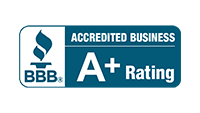
When it comes to business success, lead generation is crucial. KPI metrics focused on new leads and prospects can provide valuable insights into how effectively a company attracts new customers. Tracking this monthly metric can help identify areas where a business excels and areas that need improvement. In this blog post, we’ll explore the best new KPI metrics for new leads and prospects that companies should track and how to measure and optimize them.
KPI Metrics Focused on New Leads and Prospects
- Total Number of New Leads
- Lead Source
- Lead Quality
- Lead Response Time
- Cost Per Lead (CPL)
- Lead-to-Customer Conversion Rate
- Average Time to Convert a Lead
- Sales Cycle Length
- Sales Volume
1. Total Number of New Leads
The number of new leads per month is the most basic metric for measuring lead generation success. This metric provides a clear picture of how many new potential customers a business is attracting each month. Calculate this metric by counting the total number of new leads generated in a given month.
Tracking this metric every month can help identify trends in lead generation. For example, if new leads decrease over time, it may be time to re-evaluate the lead generation strategy or target a new audience. On the other hand, if the number of new leads increases, it may be a sign that the lead generation strategy is working well and can be optimized further.
2. Leads by Source
Understanding where new leads are coming from is key to optimizing lead-generation strategies. Tracking new leads by source can help identify which marketing channels are most effective at generating new leads. Count the new leads each marketing channel generates to track this metric.
Common marketing channels for generating new leads include:
- Email marketing
- Social media marketing
- Content marketing
- Search engine optimization (SEO)
- Paid advertising (e.g., Google Ads, Facebook Ads)
By tracking new leads by source, businesses can focus their efforts on the marketing channels that are most effective at generating new leads.
3. Lead Quality
A qualified lead is a potential customer vetted and determined to be a good fit for your product or service. Different types of qualified leads exist, like marketing and sales.
Marketing qualified leads have been determined to be a good fit for your product or service based on their behavior, such as subscribing to your email list or visiting your website.
Your sales team can determine if leads fit your product or service well based on their needs and budget.
4. Lead Response Time
Lead response time, or speed to lead, is how long it takes for businesses to follow up after the leads have contacted them. To get the response time, you need three pieces of data: when the potential customer contacted you, how long it took your team to respond to them, and the total number of leads. Once you have calculated the sum of all the lead response times, divide it by the number of leads to determine the average lead response time.
If your average lead response time is high, you may be losing customers, but your follow-up schedule is proving effective if your response time is low.
5. Cost per New Lead
Generating new leads can be costly, so it’s important to understand the cost-per-lead (CPL). This metric measures how much it costs to generate a new lead. To calculate this metric, divide the cost of lead generation activities by the number of new leads generated in a month. This cost includes all expenses related to lead generation, such as advertising costs, email marketing costs, and sales team salaries.
Tracking the CPL can help identify areas where the lead generation strategy may need work. For example, if the CPL is high, it may be a sign that the lead generation strategy could be more effective or that refining the target audience is necessary. On the other hand, a low CPL suggests that your lead generation efforts are cost-effective.
6. Lead-to-Customer Conversion Rate
The lead-to-customer conversion rate measures the percentage of leads that convert into paying customers. This KPI metric is important for tracking the effectiveness of your sales team in converting leads into customers.
To calculate the lead-to-customer conversion rate, divide the number of customers acquired in a given month by the number of leads generated that month.
Tracking the conversion rate of new leads can help identify areas where the lead generation strategy may need improvement. A high conversion rate indicates that your sales team effectively converts leads into customers. If the conversion rate is low, it may be a sign that the sales process needs to be changed or that the generated leads are not a good fit for the business.
7. Average Time to Convert a New Lead
The average time it takes to convert a new lead into a customer is an important metric for understanding the sales process. This metric measures the time it takes from when a lead is generated to when it becomes a paying customer. To calculate this metric, divide the total time it takes to convert all new leads by the number of new customers generated in a month.
Tracking the average conversion time can help identify areas where the sales process may need to be faster or more efficient. For example, if the average time to convert a new lead is high, it may be a sign to streamline the sales process or that follow-up processes need improvement.
8. Sales Cycle Length
Sales cycle length measures the time it takes for a lead to become a paying customer. This KPI metric is important for tracking your sales process’s efficiency and identifying improvement areas.
To calculate the sales cycle length, track the time it takes for a lead to move through each stage of the sales process, from initial contact to conversion. A shorter sales cycle indicates that your sales process is efficient and effective. At the same time, a longer one suggests that your sales process needs to be optimized to reduce the time it takes for leads to convert into paying customers.
9. Sales Volume
Sales volume measures the total amount of revenue generated from new customers acquired in a given month. This KPI metric is important for tracking the overall success of your lead generation and sales efforts.
To calculate monthly sales volume, multiply the total number of new customers acquired by the average revenue per customer. A high sales volume indicates that your lead generation efforts effectively generate revenue, while a low sales volume suggests you need to improve your strategies to increase revenue.
Regularly Track New Leads and Prospects
Measuring KPI metrics focused on new leads and prospects is important for knowing the effectiveness of your lead generation and sales efforts. By tracking these KPIs, you can gain insights into the performance of your lead generation and sales strategies and identify areas for improvement.
Knowing the strengths and weaknesses in your lead generation strategy can help you strengthen your processes for better results and increased revenue. Remember to track these KPIs regularly, set realistic goals, and make data-driven decisions to continuously improve your lead generation and sales efforts.





